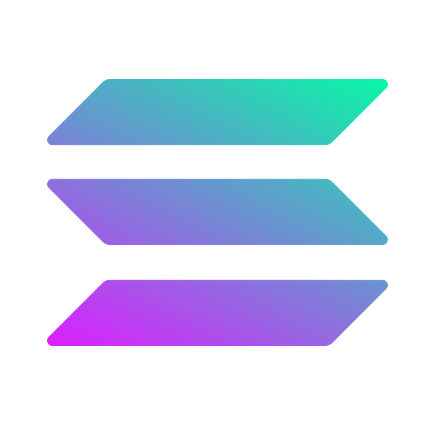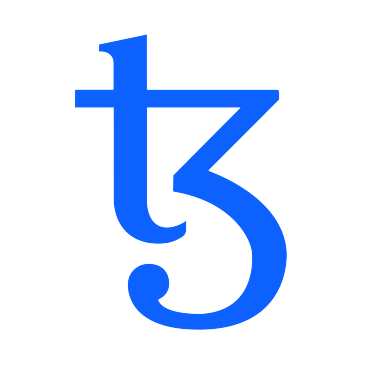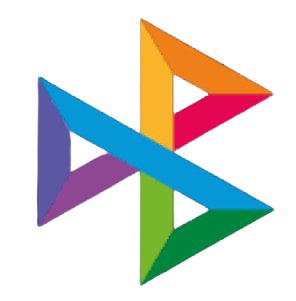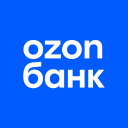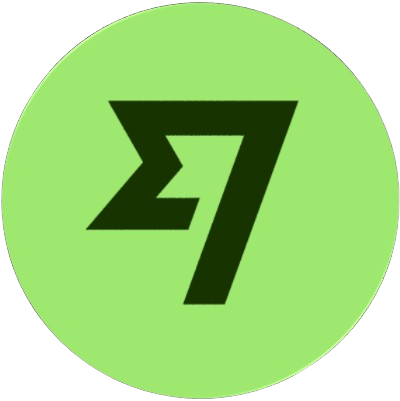EOS - the history of one cryptocurrency
EOS is not just another type of digital currency, but a fundamentally new operating system based on blockchain technology. In fact, it is both a cryptocurrency and a financial structure at the same time, which has its own characteristics and nuances. Many analysts have called it a real breakthrough in the crypto industry, and for good reason. Lets take a closer look at what is so special about cryptocurrency and how great its prospects are in the global digital economy.
About the EOS project
EOS is the internal cryptocurrency of the platform of the same name. The essence of the latter is to provide the ability to create applications for decentralized purposes. The principle of operation of the platform is similar to Ethereum, many even called EOS a more successful copy or "destroyer" of Ether. The EOS platform has an intuitive interface and high speed of transactions.
In order to implement the project, the development team implemented the principle of asynchronous smart contracts that run in parallel with each other. Due to this, the system is striking in its performance - about 100 thousand transactions in 1 second.
The internal EOS token operates on the current ERC-20 standard, in fact, this feature is one of the few that unites the currency with Ethereum. Additionally, the platform itself has a number of positive qualities, such as:
Scalability. The EOS blockchain can support about a thousand decentralized applications for commercial purposes. The system is automatically capable of separating the check and the executor; it does not require the obligatory calculation of the operations performed.
Flexibility through offering role-based generic permissions, freeze and restore broken applications, and an active site for web builds. It is thanks to this functionality that it is very flexible in relation to developers of decentralized applications.
Scale of tools. It has everything you need to develop an interface, including descriptive interfaces, declarative resolution schemes, and self-describing database schemas.
Providing equal opportunities for every depositor. As conceived by the creators, EOS signs are deprived of a fixed price, it is determined by the market. That is, such a kind of "imitation" of mining tokens without providing undeserved privileges to large investors is more democratic in relation to ordinary users.
Openness of the main functions for everyone. The key components required to run apps or blockchain ecosystems are available free of charge.
How is EOS created?
Daniel Larimer became the person who brought the idea in mind and implemented it in practice in the form of the EOS platform and cryptocurrency. In the world of digital currencies, his personality is quite famous and influential. It is worth noting that before that he was not engaged in the release of his own cryptographic coins, but worked exclusively on the promotion of other electronic currencies. At the time of the announcement of the project, which took place in May 2017, under his leadership, 2 crypto platforms were launched - BitShares and Steemit. According to the EOS developer himself, these 2 projects allowed him to gain the experience and knowledge necessary to implement a more complex project.
The EOC project itself is part of Block.one, the latter registered in the Cayman Islands. The team of creators included 50 experienced professionals. During the implementation of the development of an OS running on blockchain technology, it was decided to get investments from crypto enthusiasts by selling internal tokens. This would make it possible to actually bring the project to life.
In June 2017, the first ICO took place, during which the sale of the first platform tokens was announced. A record number of EOS coins went on sale, namely 200 million. And this despite the fact that the emission of EOS was 1 billion. Due to this decision, the project entered the 10 most capitalized currencies. The sales structure was as follows:
20% of assets were sold within 1 round;
10% - reserve of company one, which is not subject to sale or sale;
70% - divided into groups of 2 million coins, which were evenly distributed over 350 consecutive periods, the duration of which is 23 hours.
Initially, before the ICO, it was planned that the cryptocurrency would enter the market only after the end of the campaign. However, 2 months later, the tokens of this platform could be found on various cryptocurrency exchanges, the price of EOS was equal to $ 1 per unit.
During the implementation of the IKO, Block.one was able to raise $ 4 billion from investments. In 2018, the second stage of crypto sales followed, which was also crowned with success.
The users share in the EOS network is directly proportional to the amount of tokens at his disposal. This became possible thanks to the implementation of the DPoS protocol by the development team. The potential of the project, as conceived by the creator, is planned to be distributed among coin holders. It is worth noting that many analysts took this decision positively. At the same time, Larimer himself continues to successfully promote the project as the main competitor of Ethereum, paying attention to the main shortcomings in the competitors work.
EOS features
Of course, according to many users and experts, cryptocurrency is very popular. An important role in this aspect was played by the personality of the creator of the project. His many years of experience and authority have enabled him to trade tokens on the best crypto exchanges. EOS attracts the attention of large investors as well.
At the same time, the technological aspect of the platform cannot be disregarded. In particular, since the launch of the platform, it has proven its stability in operation and a high degree of security. Of course, the platform does not work without flaws, but they are not so critical and in no way reduce the level of popularity.
Based on this, we can safely say that the capitalization of EOS will continue to grow in a global perspective.
Is EOS endless?
The EOS cryptocurrency is the "business" mechanism of the network. On the basis of the site itself, a decentralized consensus type algorithm is used. It meets the performance requirements of blockchain technology through the implementation of DPoS. Due to this algorithm, owners of digital coins can choose block creators using a continuous verification system. In fact, the tokens themselves act as units of account for carrying out payment transactions. This is tantamount to the ownership of shares or bonds of a particular company.
On the basis of the platform, each coin owner can become a participant in the process of creating new blocks. In addition, everyone can create blocks in an amount proportional to the total number of producers. In this way, the performance requirements of users for decentralized blockchain applications are met. Platform block chains are created every 3 seconds. They are produced in rounds with 21 unique block producers. In the course of each round, the 20 best participants are selected, and the last (21st) is determined based on the calculation of the proportional number of votes. The shuffling of selected manufacturers is random and ensures a balanced relationship with other manufacturers.
This building system is also called "stacking". Due to it, you can carry out various currency transactions within the platform without any commission fees, which cannot be said about other popular cryptocurrencies on the market. In most cases, all transactions are subject to additional fees.
Staking is required to reserve EOS electronic coins available on the balance of specific users for a certain period of time. In return, they are provided with resources such as:
NO - network traffic that is consumed in the blockchain network while the user performs certain operations, so the number of coins reserved for the network share will depend on the size of NO;
computing power, which depends on the speed of operations;
RAM.
The first two resources from the above list are allocated in direct proportion to the number of tokens that the user will deposit for the developed 3-day contract, operating on the basis of staking. The user will not lose their coins in the smart contract, but after 3 days, the contract value and the reserved capacities will return to their original position. After that, it will be possible to use digital assets to implement other contracts.
It is currently impossible to mine EOS cryptocurrency, but you can buy EOS on various cryptocurrency exchanges. At the same time, coin holders themselves have a number of advantages, thanks to which they can:
pay for the services of conducting transactions within the system;
open access to blockchain storages;
influence the system management process;
receive dividends;
distribute cryptocurrency within the system;
use applications developed within the system.
EOS strengths
Users do not need to pay additional fees to carry out transactions within the network. All transactions are free of charge. EOS transaction time takes record seconds, and their number can reach 1000. If we compare these indicators with the same Ethereum (the main competitor of EOS), then here you can perform no more than 20 operations in 1 second. Due to the fact that transactions are carried out free of charge, in return the system requires part of the system resources, which will later be used to process outgoing transactions.
The responsibility for confirming transactions is not assigned to every miner, but to the main owners of assets within a certain block. This fact once again proves the effectiveness and uniqueness of the DPoS protocol.
EOS in TOP currencies
The economic outlook for EOS is uncertain so far. Development can follow a positive scenario and make the project successful and vice versa - lead to its complete collapse. Positive development factors include:
the use of promising program code and system architecture;
swift and positive start at the same time;
the credibility of developers and their experience;
uninterrupted operation of the system due to the use of stacking;
renewability of 2 out of 3 active resources;
growing interest from potential investors.
Additionally, it is worth noting the high level of capitalization of EOS, and this despite the fact that it appeared on the market relatively recently. As of December 2019, it is $ 2,540,243,422, the token itself does not fall below the 7th mark in the rating. The high degree of protection of the ecosystem from attacks by hackers played an important role. Therefore, the token is still viable.
A pessimistic view of the development of cryptocurrency is created due to distrust of its founder. He rejected most of the lucrative projects during their beta testing. Therefore, relying on Larimers past, many skeptics argue that a similar fate awaits the EOS.
Despite this, the EOS token was included in the list of the most promising cryptocurrencies in 2019, EOS can be bought at a bargain price on almost all cryptocurrency exchanges.
In fact, the further fate and activities of the project depend on cooperation in tandem between the holders of crypto coins and the developers themselves. The token is not a fully decentralized system because half of the total turnover is controlled by a small group of users. In this regard, they have tremendous opportunities to influence the price of assets. Despite the fact that the EOS token is stable, and the value of EOS depends on the market rate of bitcoin, there is still a high probability of a "51% hacker attack".
Cryptocurrency in this case acts as the main "digital fuel" of the entire system, which means that its development depends on the productivity and growth of the project. At the moment, even the developers themselves cannot give an accurate forecast as to what will happen to EOS.

 Русский
Русский  English
English  中文
中文  عرب
عرب  Eesti
Eesti  Español
Español  Deutsch
Deutsch  Български
Български  Türkçe
Türkçe  ქართული
ქართული 





